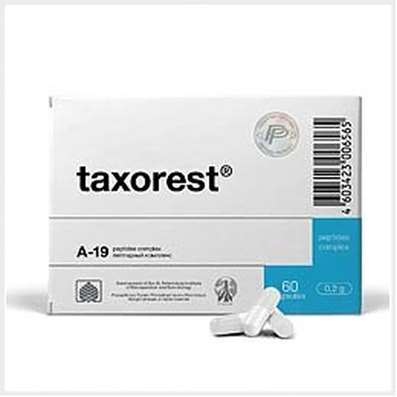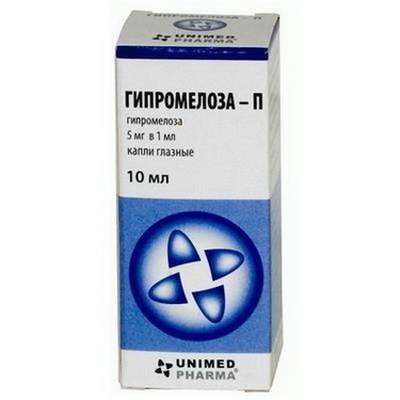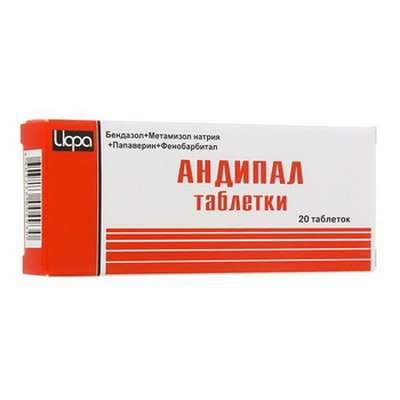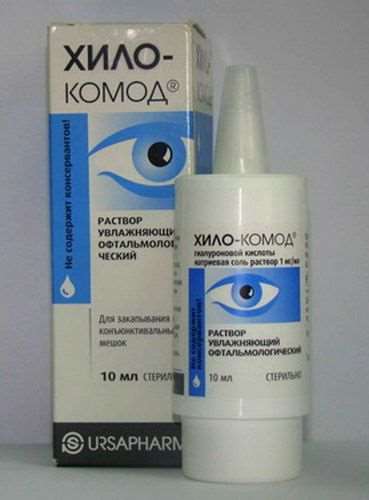Instruction for use: Lysine acetylsalicylate
I want this, give me price
Trade name of the drug: Aspisol, Laspal
Russian name
Lysine acetylsalicylate
The Latin name of the substance Lysine acetylsalicylate
Lysini acetylsalicylas (genus. Lysini acetylsalicylatis)
Chemical name
2- (Acetyloxy) benzoic acid lysine salt
Gross formula
C9H8O4.C6H14N2O2
Pharmacological group of substance Lysine acetylsalicylate
Antiaggregants
NSAID - Salicylic acid derivatives
The nosological classification (ICD-10)
I25.2 Have a myocardial infarction in the past: Cardiac syndrome; Myocardial infarction; post-MI; Rehabilitation after myocardial infarction; Reocclusion of the operated vessel; Angina postinfarctnaya; Status after myocardial infarction; Status after myocardial infarction; myocardial infarction
I74.9 Embolism and thrombosis of unspecified arteries: Arterial embolism; Arterial thrombosis; Acute arterial thromboembolism; Acute vascular occlusion; Acute occlusion of arteries; Acute arterial thrombosis; Acute thrombosis; Acute thrombosis of peripheral arteries; Thrombosis; Thrombosis in the extracorporeal circulation; Thrombosis of peripheral arteries; Peripheral vascular thrombosis; Shunttromboz; Embolism; Embolism of peripheral arteries; Occlusive Arterial Disease
I82.9 Embolism and thrombosis of unspecified vein: Venous embolism; Venous thrombosis; Diseases caused by blood clots in the vessels; Acute vascular occlusion; Acute venous thrombosis; Acute thrombosis of veins; Thrombosis; Thromboembolism; Phlebothrombosis; Embolism
K08.8.0 * Toothache: Dentinal pain; Dentinal pains; Pain pulpitis; Anesthesia in dentistry; Pain syndromes in dental practice; Pain after removal of tartar; Pain when extracting a tooth; Toothache; Pain after dental interventions
M25.5 Pain in the joint: Arthralgia; Pain syndrome in musculo-articular diseases; Pain syndrome in osteoarthritis; Pain syndrome in osteoarthritis; Pain syndrome in acute inflammatory diseases of the musculoskeletal system; Pain syndrome in chronic inflammatory diseases of the musculoskeletal system; Pain in the joints; Soreness of the joints; Soreness of joints in severe physical exertion; Painful inflammatory joint damage; Painful conditions of the musculoskeletal system; Painful joint conditions; Painful traumatic affection of joints; Pain in the musculoskeletal system; Pain in Shoulder Joints; Pain in the joints; Joint pain; Joint pain with injuries; Musculoskeletal pain; Pain with osteoarthritis; Pain in the pathology of the joints; Pain in rheumatoid arthritis; Pain in chronic degenerative bone diseases; Pain in chronic degenerative joint diseases; Bone-joint pain; Joint pain; Arthritic pain of rheumatic origin; Articular pain syndrome; Joint pains; Rheumatic pain
M79.1 Myalgia: Myofascial pain syndromes; Pain syndrome in musculo-articular diseases; Pain syndrome in chronic inflammatory diseases of the musculoskeletal system; Pain in the muscles; Tenderness of muscles; Muscular soreness in severe physical exertion; Painful conditions of the musculoskeletal system; Pain in the musculoskeletal system; Pain in the muscles; Pain at rest; Muscle aches; Muscle pain; Musculoskeletal pain; Myalgia; Muscle pain; Muscle pain at rest; Muscle pain; Muscular pain of non-rheumatic origin; Muscle pain of rheumatic origin; Acute muscle pain; Rheumatic pain; Myofascial syndrome; Fibromyalgia
M79.2 Neuralgia and neuritis, unspecified: Pain syndrome with neuralgia; Brachialgia; Occipital and intercostal neuralgia; Neuralgia; Neuralgic pain; Neuralgia of intercostal nerves; Neuralgia of the posterior tibial nerve; Neuritis; Neuritis traumatic; Neurological Pain Syndromes; Neurological contractures with spasms; Acute neuritis; Peripheral neuritis; Post-traumatic neuralgia; Severe pain of a neurogenic nature; Chronic neuritis; Essential neuralgia
R50 Fever of unknown origin: Malignant hyperthermia; Hyperthermia malignant
R52.9 Unspecified pain: Pain after cholecystectomy; Pain shooting; Non-malignant pain syndrome; Obstetric and gynecological pain; Pain syndrome; Pain syndrome in the postoperative period; Pain syndrome in the postoperative period after orthopedic operations; Painful syndrome of inflammatory genesis; Pain syndrome of non-oncological genesis; Pain syndrome after diagnostic procedures; Pain syndrome after the diagnostic intervention; Pain syndrome after operations; Pain syndrome after surgery; Pain syndrome after orthopedic surgery; Pain syndrome after trauma; Pain syndrome after removal of hemorrhoids; Pain syndrome after surgery; Pain syndrome with inflammation of non-rheumatic nature; Pain syndrome with inflammatory lesions of the peripheral nervous system; Pain syndrome in diabetic neuropathy; Pain syndrome in acute inflammatory diseases of the musculoskeletal system; Pain syndrome in the pathology of tendons; Pain syndrome with smooth muscle spasms; Pain syndrome with smooth muscle spasms (renal and biliary colic, intestinal spasm, dysmenorrhea); Pain syndrome with spasms of smooth muscles of internal organs; Pain syndrome with spasms of smooth muscles of internal organs (renal and biliary colic, intestinal spasm, dysmenorrhea); Pain syndrome with injuries; Pain syndrome with injuries and after surgery; Pain syndrome in chronic inflammatory diseases of the musculoskeletal system; Pain syndrome with duodenal ulcer; Pain syndrome with gastric ulcer; Pain syndrome with peptic ulcer of stomach and duodenum; Painful sensations; Pain during menstruation; Pain syndromes; Painful conditions; Painful leg fatigue; Gum pain when wearing dentures; The pain of exit points of cranial nerves; Painful irregular menstruation; Painful dressings; Painful muscular spasm; Painful growth of teeth; Pain in lower limbs; Pain in the area of the operating wound; Pain in the postoperative period; Pain in the body; Pain after diagnostic interventions; Pain after orthopedic surgery; Pain after surgery; Pain in the flu; Pain in diabetic polyneuropathy; Pain in burns; Pain in intercourse; Pain during diagnostic procedures; Pain during therapeutic procedures; Pain for colds; Pain with sinusitis; Pain in case of injury; Pain of a traumatic nature; Pain in the postoperative period; Pain after Diagnostic Interventions; Pain after sclerosing therapy; Pain after surgery; Postoperative pain; Postoperative and post-traumatic pain; Post-traumatic pain; Pain when swallowing; Pain in infectious and inflammatory diseases of the upper respiratory tract; Pain with burns; Pain with traumatic muscle damage; Pain in case of injury; Pain when extracting a tooth; Pain of traumatic origin; Pain caused by spasm of smooth muscles; Severe pain syndrome; Severe pain syndrome of traumatic origin; Postoperative pain; Postoperative pain syndrome; Post-traumatic pain; Post-traumatic pain syndrome; Torpid pain syndrome; Traumatic pains; Moderate pain; Moderately expressed pain syndrome; Moderate pain syndrome; Polyartralgia in polymyositis
Z100 * CLASS XXII Surgical practice: Abdominal surgery; adenomectomy; Amputation; Coronary angioplasty; Angioplasty of the carotid arteries; Antiseptic skin treatment for wounds; Antiseptic Hand; Appendectomy; atherectomy; Balloon coronary angioplasty; Vaginal hysterectomy; The coronary bypass; Interventions in the vagina and cervix; Interventions on the bladder; Intervention in the mouth; Restoration and reconstructive surgery; Hand hygiene of medical personnel; Gynecologic surgery; Gynecological intervention; Gynecological surgery; Hypovolemic shock during operations; Disinfection of purulent wounds; Disinfection of wounds edges; Diagnostic intervention; Diagnostic procedures; Cervical Diathermocoagulation; Long-surgery; Replacing the fistula catheters; Infection in orthopedic surgery; Artificial heart valve; cystectomy; Short-term outpatient surgery; Short-term operation; Short surgical procedures; Krikotireotomiya; Blood loss during surgery; Bleeding during surgery and in the postoperative period; Kuldotsentez; laser photocoagulation; laser coagulation; retinal laser coagulation; Laparoscopy; Laparoscopy in Gynecology; CSF fistula; Small gynecological operations; Small surgical procedures; Mastectomy and subsequent plastic; mediastinotomy; Microsurgical operations on the ear; Mukogingivalnye operation; suturing; Minor surgery; neurosurgical operation; Immobilization of the eyeball in ophthalmic surgery; testectomy; pancreatectomy; Perikardektomiya; The period of rehabilitation after surgery; The period of convalescence after surgery; Percutaneous transluminal coronary angioplasty; Pleural thoracentesis; Pneumonia postoperative and posttraumatic; Preparation for surgical procedures; Preparation for surgery; Preparation of the surgeon's hands before surgery; Preparation of the colon for surgical procedures; Postoperative aspiration pneumonia in neurosurgical and thoracic surgery; Postoperative nausea; Postoperative bleeding; postoperative granuloma; postoperative shock; The early postoperative period; myocardial revascularization; Radiectomy; gastric Resection; bowel resection; uterine Resection; liver Resection; enterectomy; Resection of part of the stomach; Reocclusion of the operated vessel; Bonding tissues during surgical procedures; Removal of sutures; Condition after eye surgery; Condition after surgery; Condition after surgery in the nasal cavity; Condition after gastrectomy; Status after resection of the small intestine; Condition after tonsillectomy; Condition after removal of the duodenum; Condition after phlebectomy; Vascular surgery; Splenectomy; Sterilization of surgical instruments; Sterilization of surgical instruments; sternotomy; Dental surgery; Dental intervention in periodontal tissues; strumectomy; Tonsillectomy; Thoracic surgery; Thoracic surgery; total gastrectomy; Transdermal intravascular coronary angioplasty; Transurethral resection; Turbinektomiya; Removal of a tooth; cataract surgery; Removal of cysts; tonsillectomy; Removal of fibroids; Removing the mobile primary teeth; Removing polyps; Removing broken tooth; Removal of the uterus body; Removal of sutures; Fistula likvoroprovodyaschih ways; Frontoetmoidogaymorotomiya; Surgical infection; Surgical treatment of chronic limb ulcers; Surgery; The surgery in the anal area; The surgery on the colon; Surgical practice; The surgical procedure; Surgical interventions; Surgery on the gastrointestinal tract; Surgical procedures on the urinary tract; Surgical procedures on the urinary system; Surgical intervention of the genitourinary system; Surgical procedures on the heart; Surgical manipulation; surgery; Surgery on the veins; Surgical intervention; Vascular surgery; Surgical treatment of thrombosis; Surgery; cholecystectomy; Partial gastric resection; hysterectomy; Percutaneous transluminal coronary angioplasty; Percutaneous transluminal angioplasty; Coronary artery bypass; tooth Extirpation; Extirpation of milk teeth; pulpectomy; pulsative cardiopulmonary bypass; tooth Extraction; teeth Extraction; cataract extraction; Electrocoagulation; endourological intervention; episiotomy; Etmoidotomiya; Complications after tooth extraction
CAS Code
34220-70-7
Characteristics of substance Lysine acetylsalicylate
White crystalline powder odorless or with a weak specific odor. Easily soluble in water.
Pharmacology
Mode of action - Anti-inflammatory, antipyretic, antiaggregational, analgesic.
It inhibits cyclooxygenase (COX-1 and COX-2), inhibits the synthesis of PG and the formation of thromboxane A2 in platelets.
When taken orally quickly and fairly fully absorbed in the digestive tract. Binding to plasma proteins is 80-90%. Penetrates into most body tissues. In the blood it hydrolyzes, forming acetylsalicylic acid and lysine. Acetylsalicylic acid in the liver is converted into salicylic acid. T1 / 2 acetylsalicylic acid - 15-20 min, salicylic acid and its active metabolites from 3-6 h (small doses) to 15-30 h (high doses).
Application of the substance Lysine acetylsalicylate
Feverish syndrome with infectious and inflammatory diseases; Pain syndrome of different genesis, incl. Rheumatic pains, toothache, neuralgia, myalgia, arthralgia, pain in the postoperative period; Thrombosis and thromboembolism (prophylaxis), myocardial infarction (secondary prevention).
Contraindications
Hypersensitivity, erosive-ulcerative lesions of the gastrointestinal tract (in the stage of exacerbation), gastrointestinal bleeding, aspirin asthma, hemophilia, hemorrhagic diathesis, hypoprothrombinemia, portal hypertension, avitaminosis K, kidney failure, glucose-6-phosphate dehydrogenase deficiency, pregnancy (I and III trimester), children and adolescents up to 15 years of age when used as an antipyretic agent (risk of developing Reye syndrome in children with fever on the background of viral diseases).
Restrictions
Gout, erosive-ulcerative Gastrointestinal Tract in the anamnesis.
Side effects of substance Lysine acetylsalicylate
On the part of the gastrointestinal tract: NSAID-gastropathy (dyspepsia, epigastric pain, nausea and vomiting, diarrhea, gastrointestinal bleeding), exacerbation of peptic ulcer of the stomach and duodenum, decreased appetite, hepatotoxicity.
From the cardiovascular system and blood (hematopoiesis, hemostasis): hemorrhagic syndrome.
From the nervous system and sensory organs: noise in the ears, hearing loss, headache (with prolonged use).
Allergic reactions: rash, bronchospasm, anaphylactic shock.
Other: exacerbation of bronchial asthma, nephrotoxicity, Reye syndrome in children.
Interaction
Strengthens the effect of methotrexate, oral hypoglycemic agents (derivatives of sulfonylureas), weakens - uricosuric agents. It potentiates the ulcerogenic effect of corticosteroids, other NSAIDs and reserpine. The risk of developing bleeding increases with simultaneous use with direct and indirect anticoagulants.
Overdose
Symptoms: noise in the ears, hearing loss, severe headache.
Treatment: correction of acid-base balance (infusion of solutions of sodium bicarbonate, sodium citrate).
Routes of administration
Inside, I.V.(intravenously), I.M. (intramusculary), intrarectally.
PrecautionsforLysineacetylsalicylate
With caution appoint with renal failure, menorrhagia, the presence of intrauterine contraceptives.
When used in large doses close to the maximum, especially when IV is administered intravenously to people with a high risk of thrombosis, it is possible to increase the aggregation activity of platelets, and therefore it is more expedient to inject the drug in intramuscularly.

 Cart
Cart





